Telematics: building a construction ecosystem
28 January 2020
Not long ago, the word telematics conjured mundane (and possibly anxiety-producing) thoughts of endless machine metrics and piles of incomprehensible data. Today, the term only scratches the surface of a larger concept that presents the modern construction site as an ‘ecosystem’ characterised by as many interconnected moving parts as any natural environment.
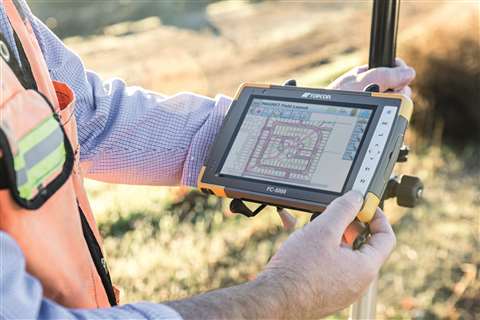
Despite the magnitude of that statement, recent advancements in technology promise to make work simpler, more efficient and more productive for construction professionals who see themselves as part of a bigger picture.
Comparing a construction site to a natural ecosystem might sound like a stretch, but it simply refers to the idea of collaboration. According to Soeren Brogaard Jensen, CCO with Trackunit, there’s a delicate interplay on today’s most advanced jobsites between the Original Equipment Manufacturers (OEMs) who build the equipment, the rental companies who often supply it, the professionals planning the project and the workers operating the machines.
Construction data
“We’ve started to think about telematics as something that is animating and improving collaboration across the ecosystem,” he says. “Stakeholders have come to appreciate that if we can let the most relevant data flow freely between corridors, everyone wins.”
Burcin Kaplanoglu, executive director of innovation, Oracle Construction and Engineering, agrees there’s a growing emphasis on using data for the greater good.
“A lot of this will be driven by a recognition of the benefit of data that can be captured and analysed,” he says. “Construction businesses at the cutting edge will be demanding greater transparency, knowledge and collaboration of the construction process to have more control.”
But what does data sharing look like to equipment owners on a practical level?
In answer to that question, Jensen recalls that construction professionals used to buy machines and then choose a telematics system and retrofit their fleet with the technology. The data gathered was held by the equipment owner. This is still often the case, but OEMs are increasingly fitting their machines with telematics in the factory as standard equipment.
There are endless metrics that can be measured, and only a portion are relevant to the average equipment owner. The remaining bulk of the data, however, can be extremely valuable to the OEM and is easily accessible through an application programming interface (API) that connects each piece of equipment with a server that collects information. In other words, this happens seamlessly, without any effort on the part of the equipment owner or operator.
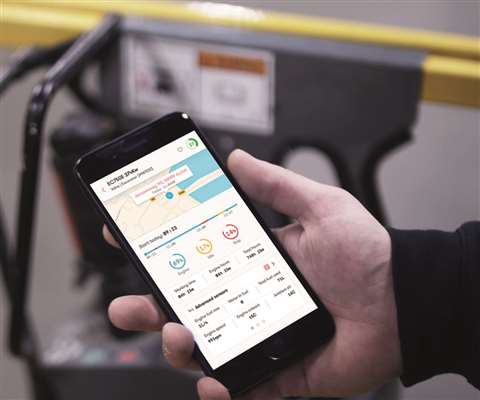
“The concept of sharing data is central to the benefits a telematics system can offer, since the more information OEMs can gather about actual machine usage, the better they can design equipment for real-world use in the future,” adds Trackunit’s Jensen.
From barcodes to artificial intelligence
Telematics technology has come a long way in its relatively short history, and the evolution is rapidly picking up speed.
Holger Pietzsch, heavy construction VP of marketing at Hexagon’s geosystems division, Leica, explains how telematics provides benefits on three levels: operational efficiencies, asset management, and operator/jobsite performance.
“In its most simplest form, telematics are similar to the evolution of the barcode for supply chain management; it gives you internal operational efficiencies,” he says, noting, for example, that an OEM can track the health, location and workload of their sold equipment through telematics.
When it comes to asset management, telematics uses a ‘data wrapper’ on each unit to remotely monitor the equipment and give the owner feedback, such as how much fuel that individual machine is consuming or whether the engine is overheating, or is liable to in the near future.
Pietzsch says today’s telematics systems are also moving in a direction more focused on the actual work being done, enhancing jobsite efficiency.
“You own these excavators to move dirt… on time, upon spec and on budget,” he says. “Ultimately, if you don’t move the dirt where and when it needs to be moved, you don’t get paid. Our technologies focus more on improving how much dirt is moved and was it the amount it was supposed to be.”
With that in mind, companies like Leica are offering technology such as machine control guidance – an early form of autonomy – that allows construction professionals to perform their work more precisely.
“Now someone can sit at their computer and design a ditch and then download that design onto a piece of equipment, such as an excavator. The machine actually then becomes spatially aware,” Pietzsch says. “When the excavator starts moving dirt, the technology tells the operator they are no longer digging straight or they’re too deep or they’ve got to turn. The technology starts interacting directly with the machine.”
Once machines have this basic level of “intelligence,” Pietzsch says they can become part of the larger “ecosystem,” sensing what needs to be done and providing feedback to the operator.
“AI is the big game changer in construction because of the focus on improving productivity in an industry that continues to see competitive pressures,” Kaplanoglu states. “It’s about capturing, analysing and sharing data from projects to mitigate risks, manage issues earlier and continually improve from project to project.”
Construction equipment performance
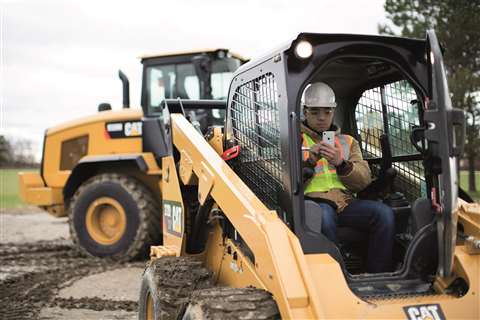
Aggregating data from different owners affords OEMs with the true story of equipment performance based on real users’ experiences. This is crucial to equipment design and advancement and can benefit both owners and operators in the long run.
The average aerial work platform, for example, has a hundred data points that are continuously monitoring the hydraulic systems, the engine and any alarms, etc. Out of all those data points, Jensen says approximately 30% are relevant to the user of that machine.
“The remaining 70% are really not that relevant to the user,” he says. “But OEMs are extremely interested in that data so it can be inserted into how machines are being manufactured for the next generation of equipment.”
The majority of data collected is gathered through user response to error codes, which can be as simple as an informational notation, such as the seatbelt is not fastened, or as critical as imminent component failure.
“The data that’s produced gets validated by the people in the field,” Jensen explains. “We call this ‘ground truth.’ By sharing this data, suddenly you can augment and improve the information by connecting thousands of users who’ve acknowledged this error.”
Kevin Garcia, general manager of civil specialty solutions at Trimble, echoes this statement.
“Today’s technology allows OEMs to get information like engine fault codes, fuel burn, tyre pressure and other metrics from the system, and technology providers can pull back operator performance, task percent completion, cut/fill maps, updated surfaces and more.
“Civil contractors are interested in controlling their inputs and using technology to gain visibility into every truckload of material as it is loaded at the quarry with loader scales and software like InsightHQ, a quarry management portal from Trimble that provides performance metrics on a web browser or mobile device.”
Garcia continues, “During mass haul operations, the combination of traditional excavator scales connected to haul monitor systems across a mixed fleet is delivering an immediate 25% more material moved, and an understanding of total tons moved, truck counts and each step in the haul cycle.”
The brain of construction
As more data is shared and aggregated through telematics technology, equipment can be manufactured to be increasingly intuitive and intelligent.
“If you look across a population of a half million machines in a territory, you can start predicting what machine to have ready for what type of jobs, and in what depot,” Jensen says. “We’re trying to take those AI algorithms and think about how can we actually make the data generally available, not just for one customer but as an open source system, almost like the ‘brain of construction.’
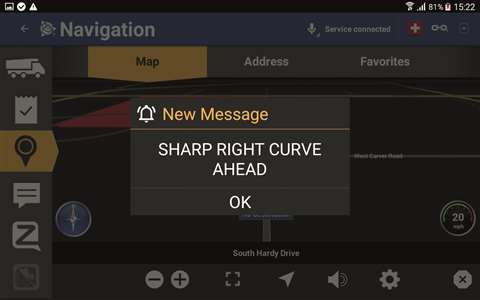
“What we’re trying to push here is internalising data, using it in your own value chain, but also putting it back into an open source community to leverage the power of the ecosystem; the power of many people thinking about the same problems,” Jensen continues.
Pietzsch from Hexagon agrees, adding, “Rather than using telematics to track and monitor one asset, it’s now more about how this asset compares to all the others in relation to the work that needs to get done. It’s really embedding the information of that machine and what it does into the plan of what’s supposed to happen on that jobsite.
“We see increasing focus on using technology to enable better collaboration of people and coordination of activities,” Pietzsch adds.
Fabrizio Dell’Acqua, machine control and telematics specialist at Topcon Positioning Group, notes that sharing data will have to be done conscientiously.
“We need to continue to develop our industry-wide sharing standards, such as the AEMP API, to provide end users with more convenient access to OEM equipment data,” he says.
“This will allow them to better manage and analyse information across their fleets and save time and money on the job site or within their operations.”
Telematics has already brought many benefits to today’s construction jobsites, and that trend promises to continue – and accelerate – as more data is shared between stakeholders.
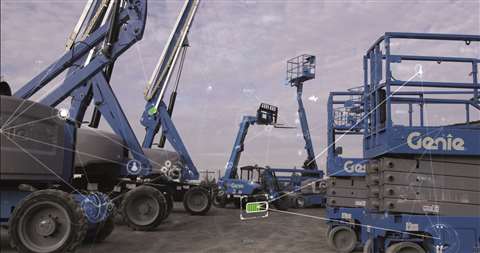
5G a game changer
Improvements in global information infrastructure are allowing telematics technology to offer greater immediate benefits on today’s jobsites, as well as alleviating some bigger-picture industry concerns.
The advent of 5G wireless technology (the fifth-generation of digital cellular networks) began widespread deployment in 2019 and is allowing telematics technology to expand on today’s jobsites at an ever-faster pace.
“The rapid growth and expansion of global cellular networks allows for faster data transmission,” explains Christine Zeznick, Genie director of business development – telematics, Terex AWP. “With the shortage of technicians in the industry, leveraging telematics – like the data the Genie Lift Connect solution provides – allows a service technician to remotely troubleshoot a customer’s concern and potentially avoid a costly on-site service visit. This type of savings in both time and labour can add up quickly.”
The ability to effectively monitor maintenance from afar is another powerful aspect of telematics.
“Long-term rentals have traditionally posed a problem for knowing when maintenance is due,” Zeznick notes. “As a result, customers often set a calendar-based schedule to visit the machine and perform engine maintenance. This has resulted in potentially servicing the machines more than required or not as frequently as needed. Telematics allows a rental company to see precise machine hours remotely and manage the maintenance of long-term rentals more efficiently, driving savings.”
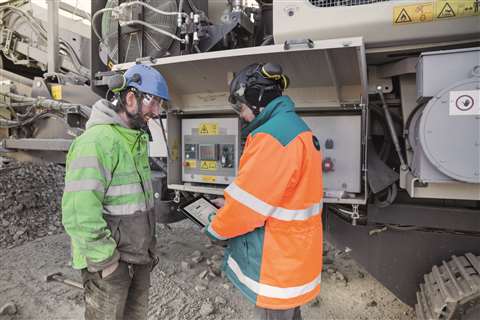
Improving efficiency
Steve Janda, construction digital and technology market manager at Caterpillar on improving efficency
“Remote Troubleshoot enables Cat dealers to run diagnostic testing on connected machines, diagnose the cause of a fault code or alarm and pinpoint potential issues while a machine is in operation,” he says. “Remote Flash enables remote updates to a machine’s onboard software without a technician present. A Cat dealer notification informs customers when a new software update is available, and the customer can deploy the update while the machine is on the jobsite.
“Remote Flash and Remote Troubleshoot are revolutionising the way machines are serviced,” says Janda. “Saving a trip to the machine saves the customer both time and money.”
Jari Hytti, manager, field service applications, Metso, says its remote monitoring function is helping customers keep up with machine inspections, again preventing unnecessary man hours.
“We can proactively contact our customers and agree on the date when the inspector can come to the site to make the inspection,” says Hytti. “Same thing applies for the upcoming maintenance events: We can proactively contact our customers and offer our services to them based on the data from the machine.”
He continues, “Remote troubleshooting will help our customers when the Metso experts can see the machine alarm log. Based on that, they can help solve the possible problems the customer might have without leaving the office. This way, the customer’s machine will be up and running faster.”
Hytti says the technology is evolving to allow artificial intelligence to work with remote monitoring systems, helping machines to begin making predictions about what’s going to happen and either make or suggest corrective action for the user.





